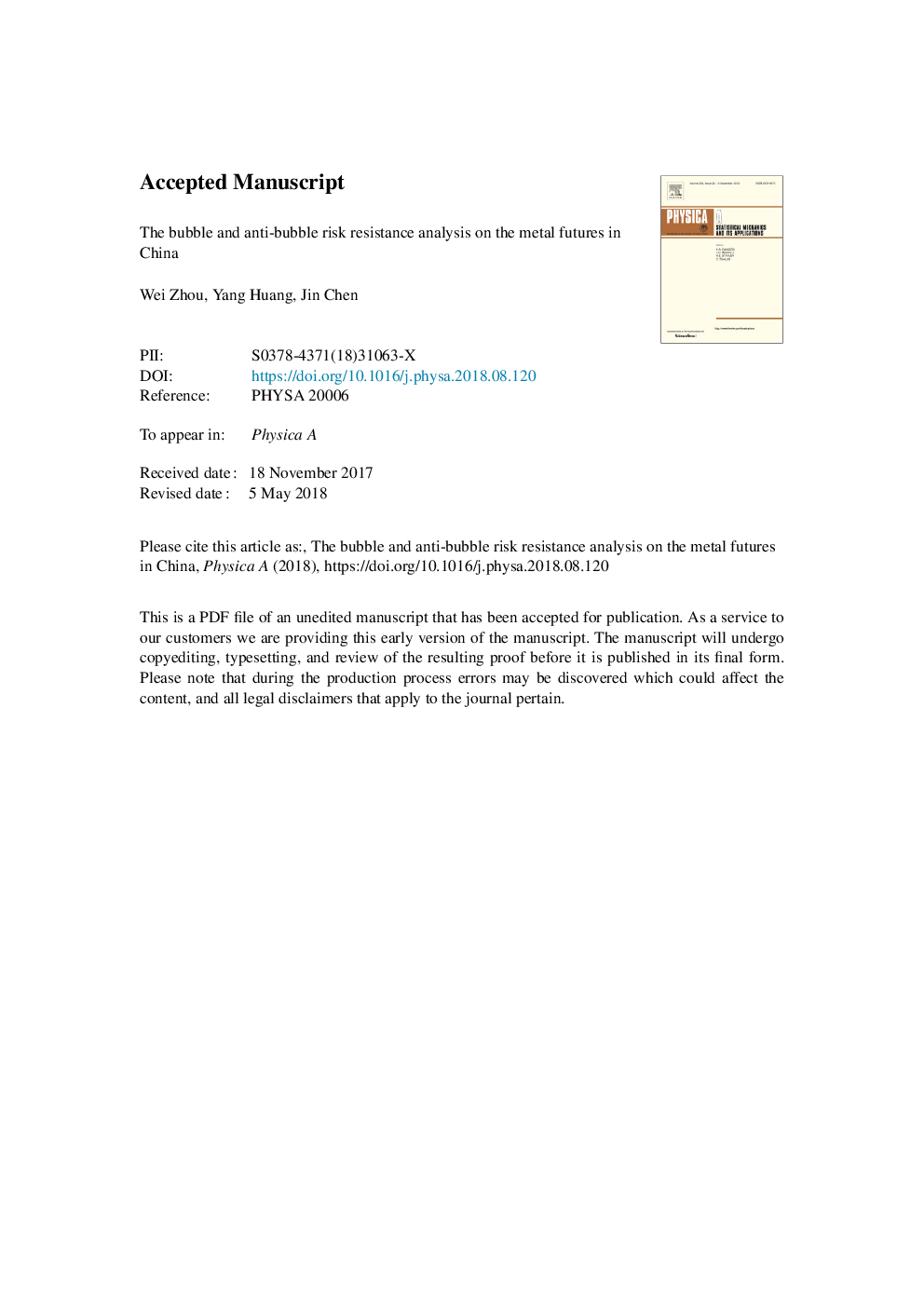| Article ID | Journal | Published Year | Pages | File Type |
|---|---|---|---|---|
| 7375334 | Physica A: Statistical Mechanics and its Applications | 2018 | 27 Pages |
Abstract
This paper investigates the risk resistance ability of China's metal futures before and after the financial crises in 2008 and 2015. The log periodic power law singularity (LPPLS) model is utilized to measure the financial bubble and anti-bubble during these periods. In addition, the risk resistance ability is quantitatively measured by the two derived parameters in the model. They control the super-exponential growth of price and describe the log-periodic acceleration of volatility, respectively. Further, we select the Shanghai Zinc (SZ) futures and the Shanghai Aluminum (SA) futures in Shanghai Futures Exchange as the objectives to empirically study their risk resistance ability during the above mentioned periods. Then, some interesting findings are concluded as follows: (1) For the China's metal futures, the bubble risks last longer than the anti-bubble risks before and after the two financial crises. (2) The China's metal futures have risk resistance ability in anti-bubble, but the ability is relatively weaker in bubble before and after the two financial crises. (3) The LPPLS model can efficiently predict and measure the bubble and anti-bubble of the financial products. It also gives us an access to observe the risk resistance ability of financial products by the derived parameters.
Keywords
Related Topics
Physical Sciences and Engineering
Mathematics
Mathematical Physics
Authors
Wei Zhou, Yang Huang, Jin Chen,
